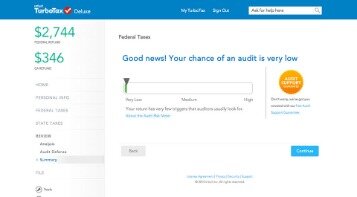Contents:


TheDebt to Asset Ratio, or “debt ratio”, is a solvency ratio used to determine the proportion of a company’s assets funded by debt rather than equity. This means that the company has twice as many assets as liabilities. Or said a different way, this company’s liabilities are only 50 percent of its total assets. Essentially, only its creditors own half of the company’s assets and the shareholders own the remainder of the assets.
Debt ratios can vary widely depending on the industry of the company in question. The ratio also helps the top management check their company’s performance and make relevant decisions. Debitoor accounting and invoicing software gives you the tools to run your business from anywhere, at any time with access from one account across all of your devices. Adam Hayes, Ph.D., CFA, is a financial writer with 15+ years Wall Street experience as a derivatives trader.
What Does a Low Debt Ratio Mean?
Imagine a company, John Doe Inc., has $50 million of debt on its balance sheet and $100 million of assets. Once the debt amounts are totaled along with the assets, the debts would be divided by the assets as shown in the formula below. Here, the value states that the company has a good debt ratio. This is considered a low debt ratio, indicating that John’s Company is low risk.
Meanwhile, a debt ratio of less than 100% indicates that a company has more assets than debt. Used in conjunction with other measures of financial health, the debt ratio can help investors determine a company’s risk level. So if a company has total assets of $100 million and total debt of $30 million, its debt ratio is 0.3 or 30%. Is this company in a better financial situation than one with a debt ratio of 40%? A company’s debt ratio can be calculated by dividing total debt by total assets.
Stand out and gain a competitive edge as a commercial banker, loan officer or credit analyst with advanced knowledge, real-world analysis skills, and career confidence. A ratio of less than 100% means it has more debts than assets. Ultimately, the acceptable debt ratio depends on what the standard is for that industry. In order to get a more complete picture, investors also look at other metrics, such as return on investment and earnings per share to determine the worthiness of an investment.
Equifax Premium Products
Besides his extensive derivative trading expertise, Adam is an expert in economics and behavioral finance. Adam received his master’s in economics from The New School for Social Research and his Ph.D. from the University of Wisconsin-Madison in sociology. He is a CFA charterholder as well as holding FINRA Series 7, 55 & 63 licenses. He currently researches and teaches economic sociology and the social studies of finance at the Hebrew University in Jerusalem. If a significant portion of your income is going towards paying off debt, you have less left over to save, invest or spend. Keeping your ratio down makes you a better candidate for both revolving credit and non-revolving credit .
- Some sources consider the debt ratio to be total liabilities divided by total assets.
- The corporation’s debt ratio is 0.60 or 60% ($60,000 divided by $100,000).
- The debt ratio is a ratio used by financial managers to determine how much of a company’s debt it can take on.
- Based on the evaluation, they decide whether it would be beneficial for them to invest in it.
- Our goal is to deliver the most understandable and comprehensive explanations of financial topics using simple writing complemented by helpful graphics and animation videos.
- Total assets include property, equipment, goodwill, and accounts receivable.
INVESTMENT BANKING RESOURCESLearn the foundation of Investment banking, financial modeling, valuations and more. Financial LeverageFinancial Leverage Ratio measures the impact of debt on the Company’s overall profitability. Moreover, high & low ratio implies high & low fixed business investment cost, respectively. The next step is calculating the ratio as the users know the total debt.
If a company has a high debt ratio (above .5 or 50%) then it is often considered to be”highly leveraged” . A debt-to-equity ratio of 1.5 would indicate that the company in question has $1.50 of debt for every $1 of equity. To illustrate, suppose the company had assets of $2 million and liabilities of $1.2 million.
The debt to equity ratio takes into account the company’s total liabilities, while the debt to total assets ratio takes into account the company’s total assets. The debt to equity ratio is a more stringent measure because it considers the company’s total liabilities, which are a subset of the company’s total assets. The debt to total assets ratio is a financial metric used to measure a company’s debt obligations relative to the company’s total assets.
AccountingTools
As a result, Riley has $10 in debt for every dollar of home equity. The Structured Query Language comprises several different data types that allow it to store different types of information… We can express the ratio as a decimal figure or a percentage. Our goal is to deliver the most understandable and comprehensive explanations of financial topics using simple writing complemented by helpful graphics and animation videos. Put the details in the respective boxes and calculate the ratio instantly.
Constellation Energy’s Debt Overview – Constellation Energy (NASDAQ:CEG) – Benzinga
Constellation Energy’s Debt Overview – Constellation Energy (NASDAQ:CEG).
Posted: Fri, 21 Apr 2023 14:45:59 GMT [source]
Starbucks listed $998.9 million in short-term and current portion of long-term debt on its balance sheet for the fiscal year ended. The DTI ratio also provides you with a good snapshot of your current financial health. If it’s below 35%, you’re in a good position to take on new debt and pay it off with regularity.
A ratio greater than 1 shows that a large part of the assets is financed by debts. You could also say that the company has more liabilities than assets. A high ratio also indicates that a company might default on loans if the interest was to go up suddenly. A ratio lower than 1 means that a larger part of a company’s assets is financed by equity.
This would be unsustainable over long periods of time as the firm would likely face solvency issues and risk triggering an event of default. The higher the ratio, the greater the proportion of debt funding and the greater the risk of potential solvency issues for the business. In this InvestingAnswers video, Sara Glakas explains debt ratio and gives us some examples of how the formula works. She tells us why different industries have higher or lower ratios. When viewing the two companies, side by side, you’ll notice that even though Super Co. has more assets than Mega Co., they also have more debt. Since Mega Co. has a lower debt ratio than Super Co., Izzy the investor is more likely to invest in Mega.
A Debt Ratio Analysis is defined as an expression of the relationship between a company’s total debt and its assets. It is a measurement for the ability of a company to pay its debts. It indicates what proportion of a company’s financing consists of debts. This makes it a good way to check the company’s long-term solvency. For this reason, it’s best to do some preliminary research on the industry before making a decision based on the debt ratio.
Direct Costing method: explanation and calculation – Toolshero
We also reference original research from other reputable publishers where appropriate. You can learn more about the standards we follow in producing accurate, unbiased content in oureditorial policy.

It helps investors and creditors to also analyse the total debt of the company, as well as the ability of the company to pay its debts in future, uncertain economic times. In most cases, a lower debt quotient means a more stable company with longevity potential because a company with a lower ratio also has less total debt. However, each industry uses its own benchmarks for debts, with 0.5 being an okay ratio. The sum of short-term debt, long-term debt, and other fixed payment obligations of a business that are incurred while under normal operating cycles.
A high debt ratio indicates that a company is using a large amount of debt to finance its operations. This can be a sign of financial distress, as it increases the company’s vulnerability to downturns in the economy or to changes in interest rates. A high debt ratio can also make it difficult for a company to borrow money. The debt ratio is a ratio used by financial managers to determine how much of a company’s debt it can take on.
What’s the difference between debt-to-limit and debt-to-income ratios?
Power its potential with one of our business credit cards, like Ink Business Preferred℠, Ink Business Unlimited℠ or Ink Business Cash℠. Earn Chase Ultimate Rewards® on everyday purchases and redeem for travel, cash back and more. See all our rewards credit cards and choose one that’s right for you. Keeping your DTI ratio at a reasonable level signals that you’re a responsible manager of your debt, which can improve your eligibility for financial products. DTIs between 42% and 49% suggest you’re nearing unmanageable levels of debt relative to your income.

The debt ratio is the total debts compared to the total assets of a company. To find a business’s debt ratio, divide the total debts of the business by the total assets of the business. The debt to equity ratio is calculated by dividing the total amount of debt by the total amount of equity. The intent is to see if funding is coming from a reasonable proportion of debt.
A high debt-equity ratio can be good because it shows that a firm can easily service its debt obligations and is using the leverage to increase equity returns. Car rental companies, which have lots of assets, have a high debt ratio. Car rental companies finance the purchase of their vehicles with debt. Debt ratio shows us how well a company can clear its debts by using its assets. Alternatively, it tells us how many assets a company must sell to pay off all its liabilities. Lenders closely monitor this measurement when deciding whether to offer loans.
What is a Good Debt-to-Income Ratio?
Generally speaking, the lower a DTI ratio you have, the less risky you appear to lenders. However, for most lenders, 43 percent is the maximum DTI ratio a borrower can have and still be approved for a mortgage. Place an alert on your credit reports to warn lenders that you may be a victim of fraud or on active military duty. Credit Cards Explore tips on getting the right credit card for you and what it means for your credit. Plus, managing credit card debt and what to do if you lost your card. Credit Reports Understand how your financial behavior impacts you and your credit, along with what is included on your credit reports and why.
A low debt ratio also means that the company has more equity, which gives it more money to invest in its business. This can be a good sign for investors, as it indicates that the company is stable and has a good chance of growing in the future. Next, determine your monthly gross income—that is, income before taxes and other deductions. Divide your monthly debt payments by your monthly gross income to get your ratio. Keeping your debt at a manageable level is one of the foundations of good financial health. But how can you tell when your debt is starting to get out of control?
The Hotchpotch World Of Financed Emissions: A Case Study Of Top Four US Banks In The Energy Sector – Forbes
The Hotchpotch World Of Financed Emissions: A Case Study Of Top Four US Banks In The Energy Sector.
Posted: Wed, 19 Apr 2023 13:48:17 GMT [source]
When companies borrow more money, their ratio increases creditors will no longer loan them money. Companies with higher debt ratios are better off looking to equity financing to grow their operations. Make sure you use the total liabilities and the total assets in your calculation. The debt ratio shows the overall debt burden of the company—not just the current debt.
The purchase journal ratio is a metric used in accounting to determine how much debt a company leverages to finance its operations and assets. It’s a good indicator of the level of risk a company has taken on and is usually shown as a percentage or decimal. Debt ratios measure the extent to which an organization uses debt to fund its operations. They can also be used to study an entity’s ability to pay for that debt.
